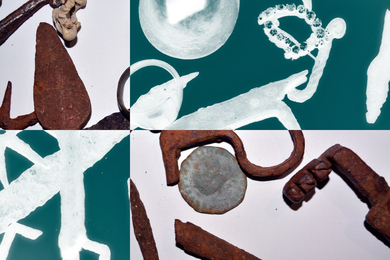Two MIT physicists have developed equations that should help scientists gain a better understanding of the plasmas, or gases of electrically charged particles, key to several relatively new research applications here on Earth and present in vast amounts throughout the universe.
"We believe that these equations will allow physicists to treat a whole class of plasmas that were previously inaccessible to analytic calculations," said Richard D. Petrasso, a principal research scientist at the Plasma Fusion Center.
Dr. Petrasso and Chi Kang Li, a graduate student in nuclear engineering, published the equations and described their application to a specific plasma in two articles in the May 17 issue of Physical Review Letters. The work represents a substantial part of Mr. Li's doctoral thesis.
Although relatively rare on earth, plasmas make up more than 99 percent of the visible matter in the universe. Examples include the solar corona (the halo of particles surrounding the sun), the interior of Jupiter, lightning bolts, and the crust of a neutron star.
Until Dr. Petrasso and Mr. Li's calculations, plasmas were basically divided into two regimes-strongly and weakly coupled plasmas-based on density and temperature. Weakly coupled plasmas, like the solar corona and lightning bolts, have very low plasma densities but are relatively hot. Strongly coupled plasmas, like the iron crust of a neutron star and the interior of Jupiter, are extremely dense, but relatively cool.
To describe these plasmas, scientists have developed equations specific to both regimes. Yet according to Dr. Petrasso, neither set of equations could adequately or simply describe the large class of plasmas that form a transition between the two regimes. (The core of the sun and the cores of most other stars are composed of such plasmas.)
After thinking about this problem for some time, a year and a half ago Dr. Petrasso and Mr. Li began to develop equations that could describe these plasmas, called moderately coupled plasmas. Specifically, they developed the new set of equations by extending those currently used to describe weakly coupled plasmas. (Dr. Petrasso noted that "no supercomputer was used for these calculations, only Li's gift for mathematical physics.")
Why hadn't scientists developed these equations earlier? One reason, Dr. Petrasso said, is that there had been a tradition of working primarily with weakly and strongly coupled plasmas. "And that was fine, until applications [involving plasmas in the middle regime] came along," he said. Suddenly scientists had access to such plasmas, and wanted to explain them.
These applications include two relatively new lasers: short-pulse (which has been around for about five years), and x-ray (which has been around for about 10). In a short-pulse laser, plasmas are formed when the laser irradiates a target; in an x-ray laser, the lasing medium is itself a plasma. Both lasers are currently in the early stages of basic research, but could one day be useful in biological imaging and other areas.
Another important application is inertial confinement fusion. In this approach to controlled nuclear fusion, lasers irradiate a tiny pellet (about one millimeter in diameter) from all directions. The pellet implodes, creating a plasma in its core. (Mr. Li noted that the pellet with its plasma core "is a perfect analogy to the sun, in that both have pressures of about 200 billion atmospheres at their cores.")
Using the new equations these moderately coupled plasmas can now be analyzed. In fact, one of the Li/Petrasso articles in Physical Review Letters does just that with inertial confinement plasmas.
In addition, the two have written a paper applying the equations to short-pulse laser plasmas. That paper has been accepted for publication in the Proceedings of the Optical Society of America.
And they continue to think of new applications for the equations. "They're the foundation for a whole vast area for us to start exploring," Dr. Petrasso said.
For all the commendations of peers and notice in journals, however, "I think what pleases me most is that this is Chi Kang's thesis work," Dr. Petrasso concluded.
The work was supported by the Department of Energy and Lawrence Livermore National Laboratory.
A version of this article appeared in the May 26, 1993 issue of MIT Tech Talk (Volume 37, Number 34).





